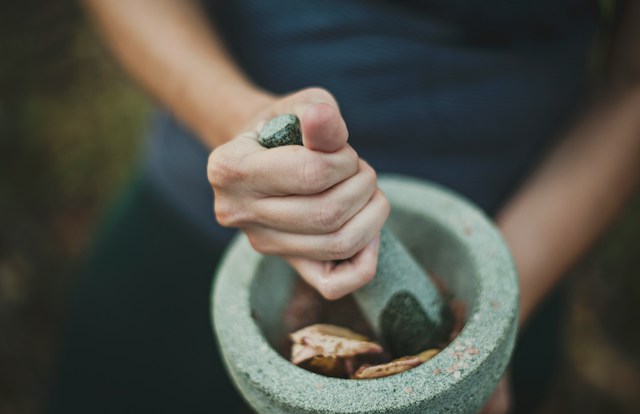Nature has always had many healing powers, and herbs are no exception. People have turned to plants for their medicinal properties for centuries and have used natural remedies in various parts of the world. One of these powerful herbs is Kratom, a tree native to Southeast Asia that is traditionally used for its analgesic and mood-boosting effects. But Kratom is just one example of how nature’s bounty can be harnessed for our well-being.
In this article, we explore the benefits of integrating herbal remedies like Kratom into our daily lives and highlight other powerful medicinal plants from around the world. Join us on this journey as we discover the power of nature with herbs for life.
Kratom 101: A Guide to Using This Beneficial Plant Medicine
Kratom, a tropical evergreen tree native to Southeast Asia, has been used for centuries as a traditional medicine for various ailments. With its growing popularity in Western society, there is increasing interest in its benefits and uses. One specific strain of Kratom that has received a lot of attention lately is the white strain Kratom. This strain is known for its stimulating effects and is often used to improve focus, improve productivity and increase energy levels.
Although research continues into the plant and its effects, many people have reported positive experiences using Kratom, including those looking for a natural alternative to pharmaceutical options. As always, it is essential to consult a healthcare provider before trying any new supplement or medication.
Beyond Kratom: Other Healing Herbs Worth Exploring
There are a plethora of herbs available that offer medicinal properties beyond those of the commonly known supplement Kratom. From ashwagandha, which has been used in Ayurvedic medicine for centuries to combat stress and anxiety, to goldenseal, which has been shown to have antiviral and antibacterial properties; Exploring the world of medicinal herbs can lead to a range of alternative therapeutic solutions.
Additionally, herbs such as valerian root are known to promote relaxation and improve sleep patterns, while milk thistle has been found to promote liver health. As the push for holistic approaches to healthcare continues to grow, so does the study of traditional herbs and their modern applications. With so many natural remedies at our disposal, the potential benefits of incorporating other medicinal herbs into our wellness practices are worth considering.
Cultivating wellness from within
Incorporating herbs into our daily routines can bring balance and promote overall well-being. Whether it’s herbal teas, tinctures, or supplements, taking the time to incorporate these natural remedies into our lives can positively impact our physical and mental well-being. Taking a moment to make a cup of tea or take a moment to consume a supplement can also be helpful, as it allows us to pause and focus on self-care.
As with any new addition to our wellness routine, it is essential to approach herbal remedies mindfully and do proper research. Familiarizing ourselves with the potential benefits and risks of different herbs, consulting with healthcare professionals, and starting with small doses are all crucial steps to safely integrating herbs into our lives.
Combine herbs for synergy
Although herbs can provide several benefits on their own, their true power lies in the synergistic effects they create when combined. For example, when ashwagandha and holy basil are combined together, they enhance their individual stress-relieving properties and create a harmonious blend that promotes overall relaxation and well-being. Likewise, the combination of milk thistle and dandelion root supports liver detoxification and works together to optimize the body’s natural cleansing processes.
Understanding the compatibility of different herbs and how they complement each other is crucial to unlocking their full potential. By harnessing the collective power of these herbal partnerships, we can maximize the benefits they provide and enrich our holistic approach to wellness.
Monitor your progress and refine your herbal health routine
As with any new addition to our wellness routine, it is critical that we monitor our progress and carefully make any necessary adjustments. It is essential to recognize that each individual may respond differently to herbal remedies, so it is paramount that we pay close attention to how our bodies respond and adjust accordingly.
To optimize our herbal health routine, it is helpful to closely track dosage, frequency, and any changes in symptoms. It allows us to refine our approach and achieve optimal results. Additionally, incorporating herbs into a holistic lifestyle that includes regular exercise, nutritious diet, and mindfulness practices can provide even more important benefits to our overall well-being. By caring for our bodies and minds through a comprehensive and balanced approach, we can begin a journey towards greater well-being and vitality.
Living in harmony with nature: how herbal medicine can support personal and planetary well-being
Incorporating herbal remedies into our lives not only benefits our well-being, but can also have a positive impact on the environment. Using natural, plant-based alternatives reduces our dependence on synthetic chemicals and promotes sustainable practices. In addition, by supporting local farmers who grow medicinal herbs, we help preserve traditional knowledge and maintain biodiversity.
As we continue to learn and explore the world of herbal medicine, we should also strive to live in harmony with nature and cultivate a healthier relationship with ourselves and the planet. By incorporating herbs into our lives, we harness their powerful healing properties and deepen our connection with the natural world.




